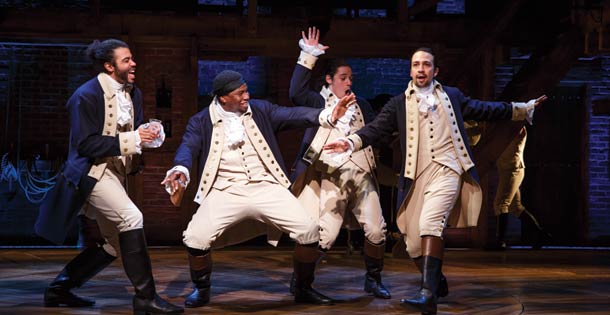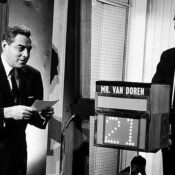With a Pulitzer Prize for its creator and a record-breaking 16 Tony nominations, Hamilton is the hottest show on Broadway. Its multiracial cast portrays the pantheon of Revolutionary greats, and for many a starry-eyed critic, the musical’s hip-hop songs, R&B rhythms, and tri-cornered hats represent “a rigorously factual period drama.” Those are the words of Jody Rosen in The New York Times, and he is not alone. As an academic who spent years studying Aaron Burr before producing a scholarly biography, I can say emphatically that rules of historical rigor do not apply to Hamilton.
The musical follows an old playbook that divides the founders into heroes and villains. This started after the Revolution, when Charles Willson Peale began compiling portraits of “Revolutionary patriots” and displayed them in his renowned Philadelphia Museum. In 1818, a Russian diplomat and artist, Pavel Petrovich Svinin, observed that “every American considers it his sacred duty to have a likeness of Washington in his home, just as we have images of God’s saints.” In death, Washington figuratively became a god when an artist attached his iconic face and head to a classic pose of Jesus sitting on a cloud and ascending into heaven. The impulse to glorify the founders is still with us. They were romanticized in the silent film era and in innumerable hokey movies since.
The drama of the founders has overtaken the reality. In the undergraduate seminar I teach, America’s Founding Myths, I ask my students to identify the life masks of John Adams and Thomas Jefferson, produced in 1825, which is as close as we can come to capturing their likenesses. None of my students recognize them. Why? They are old. Adams is jowly and bald. There isn’t an ounce of glamour in these unflattering busts. The reason that Hamilton is so popular is that the theatergoer is treated to vigorous youth, brazen sex appeal, and macho brashness, capped by so-called genius — all wrapped up in a loving and whimsical portrait of a Hamilton who “tells it like it is” in the pounding, nonstop rhythms of hip-hop. Which guy do you want to be? A shrunken Jefferson, or the dashing and daring Hamilton who, like Peter Pan, never appears to grow up?
Become a Saturday Evening Post member and enjoy unlimited access. Subscribe now



